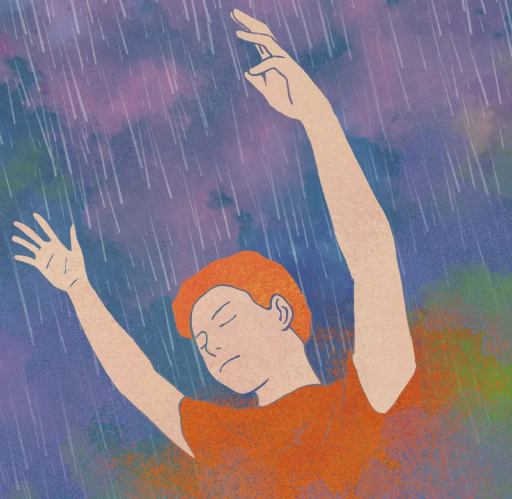
Rainbow Six Analysis and Improvement Scenarios
Author:don’t dare to play the field Ziming Wang
Contents
1. Highlights Design
1.1 Character Design
1.1.1 Character Attribute Design
Rainbow Six has two characSter attributes: speed and health point.
Speed: refers to the character’s base movement speed; the faster the character, the better for fielding (the defensive side) or breaking (the offensive side); the slower the character, the better for home guarding (the defensive side) or advancing to fill the gun (the offensive side)
Health point: Faster characters have lowerhealth point, and slower characters have high health point as compensation. A high health point will give you an advantage in sparring, and you can take more damage (except for headshots).
Advantages of this design: by defining the high and low attributes of each character, players are guided to use their characters correctly and their position in the team is clear.

1.1.2 Character Skill Design
The goal of the game for both sides is clear: the offensive team wins the game by retrieving hostages, detonating bombs, and capturing points; the defensive team wins by stopping the offensive team within the time limit.
To summarize the design direction of the characters in Rainbow Six, they can be divided into the following categories: breakthrough, fielding, information, advancement, and point guarding.
Breakthrough (the offensive side): breakthrough characters can burst into buildings at a faster rate to score a surprise hit and quickly reduce the enemy.
Fielding (the defensive side): Fielding-type characters can sneak up on advancing enemy characters in unexpected places, slowing down the enemy’s attack and disrupting the offensive side’s offensive strategy.
Information (both sides): The ability to gather enough information is one of the key factors for both sides to win the game. Therefore information-based characters will use a variety of ways to gather information about the enemy and create an advantage for their teammates.
Advance (the offensive side): The offensive character faces complex buildings and needs to gather information while steadily advancing the battle line to get closer to the game objective. Therefore, the advancing character has a better main battle weapon, a lethal offensive skill, and a skill design policy of killing the enemy.
Point guarding (the defensive side): The defensive side is divided into two types of point guarding role design: space guarding and information guarding. Space guarding refers to defending an area to stop the enemy’s advance (e.g. Smoke, Castle); information guarding refers to protecting information that benefits the enemy (e.g. information about our characters, information about the location of enemy targets) and slowing down the enemy’s information gathering.
Incidentally, Rainbow Six’s character icons are perfectly designed so that you can visualize the skills a character has and the general abilities of the skills through the icons.
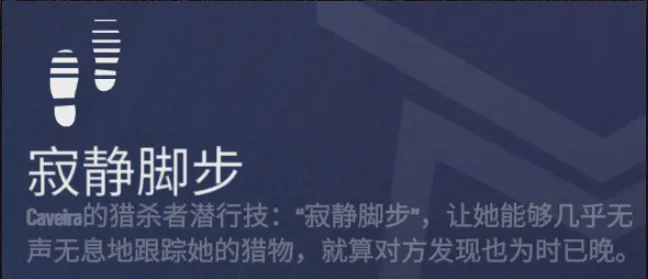
1.1.3 Character Weapon Design
According to the character’s positioning and skill design, at least two main combat weapons and equipment are designed for each character, so that players can use this character flexibly when facing different maps, different terrains, and different winning targets.
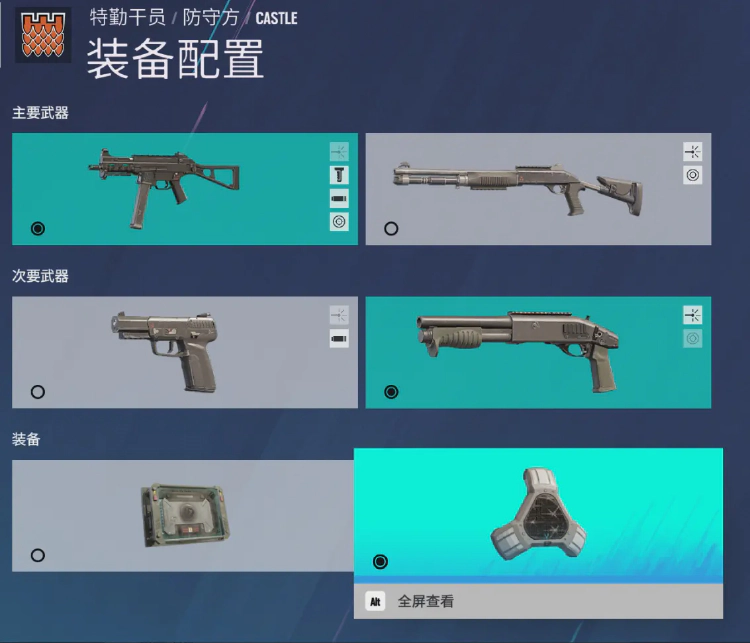
1.2 Firearm Design
The primary weapon of the offensive side is mostly an automatic rifle with low recoil, high single shot damage, and a high-powered scope.
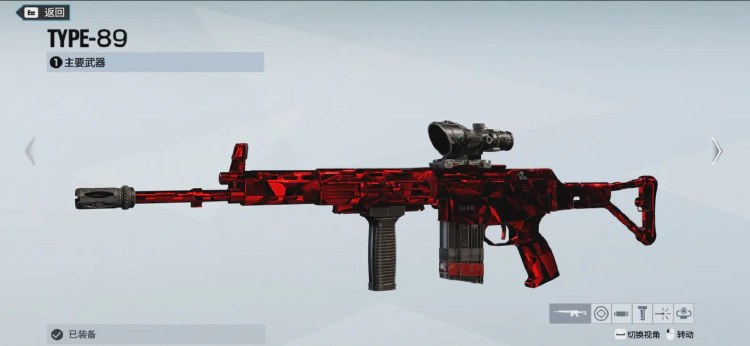
The primary weapon of the defensive side is mostly a submachine gun with less recoil, lower damage per shot, a faster rate of fire, and equipped with a doubled scope.
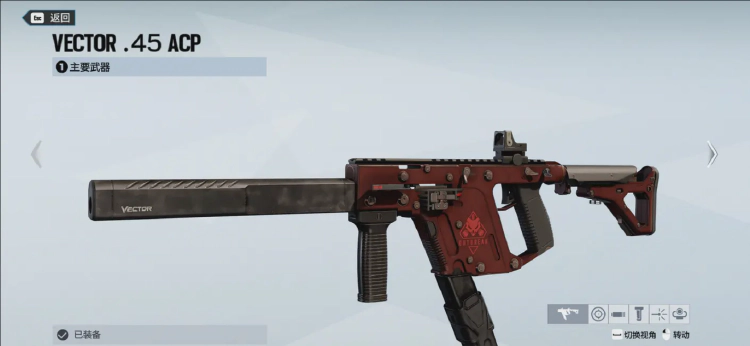
Positioned as a defensive cadre for point guarding, the primary weapon can also be a shotgun of choice for close point defense and for modifying walls to create a defensive-friendly pair of shots.
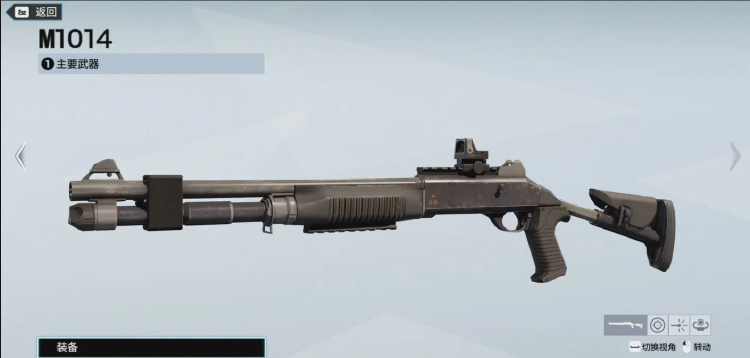
1.3 Headshots and Melee Sure Kills
Unlike CSGO and Valiant, because of poor information, many of the matchups are not frontal steel shots, and there will be a large percentage of headshots, in which case headshots will be a bonus for the information superior side. Also, with such a mechanic, the probability of a headshot path enemy is very high for the character guarding the point because of the racking gun and is also a reward for these slower characters. (of course being headshot by the enemy collecting the point guarding position is also a desired scenario for the designers)
The same is true of melee sure kills, where a silent one-hit kill is the biggest reward for the information superior side if it manages to close in on the enemy.
2. High Level of Optimized Design
2.1 The Attacking Party May Change Roles
Back in 2019, the offensive side would always face a dilemma when making character selections: whether to configure a wall-cutting combo (Thatcher + Thermite /Hibana with a reinforced wall offensive mindset), because, at the time, character selections were made before scouting, which meant that if the council’s combat mindset was not set at the time of selection, there would be no opportunity to change characters afterward.
However, this also means that if the defense doesn’t pick a defensive stemmer and goes all in on the field, the wall-cutting combo won’t be able to take advantage of the combo and will instead likely be stolen by the opponent and lose a good game because of a long setup play.
The design problems of this game mechanic are obvious: Rainbow Six’s character skills dominate the game, and each character’s skills may turn the tide of battle, while the “pick first, scout later” game mechanic dictates that the attacker’s character’s characteristics may not be used, and the tactics are laid out much like the tactical layout is very much like “open a blind box”, where pre-battle strategy becomes a guessing game.
Now, the designers have tweaked the game’s mechanics: the attacking party can change their character choice at will during the scouting phase. If the opposite side has Kapkan, I switch to IQ; if the opposite side has Caveira, I switch to Jackal. Making pre-battle strategy a see-and-be-seen experience is based on the information the offense gets in the scouting phase.
2.2 Adjustments to Equippable Accessories for Firearms
Unlike CSGO, the design team for Rainbow Six did not want this game to become a strong confrontational shooter, and the defensive side’s combat zone should be limited to the inside of buildings as much as possible. (Of course beating the field to briefly break a window and steal someone should be supported, a bonus for excellent information gathering on the defensive side)
As with the design of the offensive and defensive gun types, the offensive side needs to gradually control the map and there are a lot of situations that require medium to long range sparring, so configuring 2x and 3x for these guns is a very logical design; on the contrary, the defensive side’s cadre will have a dominant position in the building and most of the sparring will be at close range, so configuring 1x and 1.5x for these guns is a very logical design.
For example, Doctor and Rook in 2019 are two defensive characters on the defensive side, but their guns can be equipped with 2.5x scopes, and they have a high health point, which makes the use of these two characters to play in the field a few players at the time, this deviation from the character’s position is not in line with the design concept. Now the scopes on both characters have been adjusted to 1.5x, so they are finally back to their “jobs”.
In terms of character accessories, the design team has retooled the accessories carried by many characters based on their positioning: the Fuze is often positioned in the game as a ferocious offensive character: using super lethal explosives to destroy the defensive side’s lines and thus win the game. Therefore Fuze will not be the role responsible for getting off the pack, and smoke grenades will have very little strategic importance.
3. Improvement Scenarios
3.1 Instruction System
Many times, because of slow information gathering, the offensive side’s offense can be very drawn out, resulting in insufficient time to attack; the defensive side sometimes fails to get back to the objective point in time after attrition and the game fails. Therefore I think it could be like CSGO, sending pre-set radio commands for surviving friendly players with one click could alert teammates in time and improve the quality of play in all matchmaking matches.
3.2 Mini-map
Rainbow Six’s maps are more three-dimensional and complex than most FPS games, and if a mini-map of the player’s home level were available, synchronizing friendly markers to the mini-map would convey the information more accurately to the player.
3.3 Visualization of Firearm Recoil
Because the characters in Rainbow Six are set up to come from all over the globe, the types of weapons they wield vary, as do the recoil stats for each weapon. Each gun has different recoil stats when fitted with different muzzleloaders. A practice range mode should be opened, as well as an optimized recoil display graph for each gun when equipped with different accessories, so that players can familiarize themselves with the shooting attributes of each gun before battle, making it easy to improve the shooting of the player’s various firearms.
